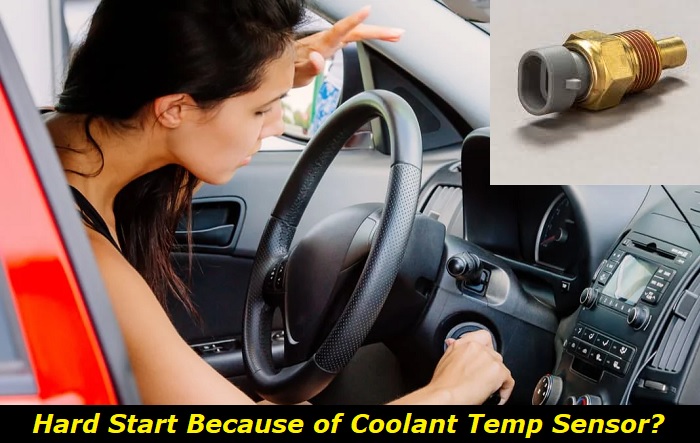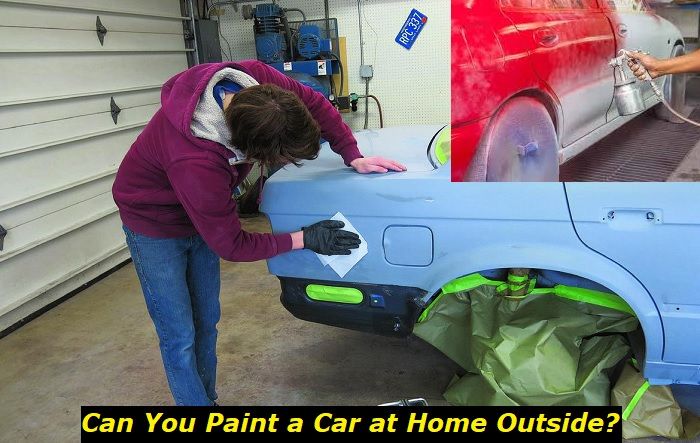The coolant temperature sensor measures the temperature of the engine coolant. The Engine Control Unit (ECU) uses the readings from the temperature sensor to adjust the timing of the fuel injectors and engine ignition system. The ECU can also use this data to time the operation of the cooling fans. This data helps the ECU control the temperature of the engine.
Engine sensors problems highlights
- DIY repairs:possible
- Tools needed:scanner,basictools
- Commonreasons:sensor problems, electric supply issues, software glitches
- Time to repair:1 - 2.5 hours
- Price for parts:$50 - $250
- Can you drive?In most cases, yes
- Alternative solutions:bypassing, driving in limp mode, roadside assistance

How Does a Bad Coolant Temperature Sensor Cause Hard Starting?
To understand how a bad coolant temperature sensor causes hard starting, we will first need to understand how a coolant temperature sensor operates.
Coolant runs through pipes in the engine and removes heat from the engine. The hot coolant is then pumped through the radiator where cool air removes the heat from the coolant.
The coolant temperature sensor detects the temperature of the engine by measuring the heat in the coolant. The ECU then manages the heat level of the engine by adjusting the fan speed and fuel consumption rate.
When the sensor goes bad, the car might shut off the engine or reduce the amount of fuel delivered to it, making it harder for the car to start.
What Are the Symptoms of a Bad Coolant Temperature Sensor?
A bad coolant temperature sensor will negatively impact the car's performance. This will result in certain symptoms that can easily be observed. Noticing one or more of these symptoms indicates that your car's coolant temperature sensor is failing.
Here are some signs that your coolant temperature sensor has gone bad:
1) Hard Start
When a faulty coolant temperature sensor causes a bad fuel-air ratio, the car won't be able to crank effectively. This causes a hard start condition or a no start condition in serious cases.
2) Irregular Temperature Readings
If the coolant temperature sensor is bad, the engine temperature gauge will not display an accurate reading. If the engine temperature seems to be colder or hotter than it normally would be, then there may be a problem with your temperature sensor.
3) Check Engine Light is On
A bad coolant temperature sensor is a serious problem that poses a risk to the engine. As a result, it triggers the check engine light.
4) Black Exhaust Smoke
The coolant temperature sensor controls the amount of fuel being delivered to the engine. A problem with the sensor can result in excess fuel being sent to the engine. This results in incomplete combustion in the cylinders, which causes black smoke to come out of the exhaust.
5) Poor Fuel Economy
As we mentioned before, the readings from the coolant temperature sensor are used to determine the amount of fuel the engine will consume. A problem with the coolant temperature sensor could cause the engine to receive too much fuel, which will greatly impact the engine's fuel economy.
What Causes a Bad Coolant Temperature Sensor?
There are two main causes of a bad coolant temperature sensor. A coolant temperature sensor could either fail as a result of corrosion building up on the sensor, which would render it incapable of accurately detecting temperature.
The sensor also fails as a result of bad or loose electrical connections. A bad connection to the ECU could prevent the car's computer from receiving data from the sensor, resulting in temperature measurement problems.
How to Deal with a Bad Coolant Temperature Sensor?
The coolant temperature sensor is a very important part of your car that monitors the engine's temperature. It's the first line of defense against overheating in your engine. While the engine will still work when it goes bad, it leads to a host of problems that can develop into more serious issues.
To protect your engine from further damage, you will need to address a bad coolant temperature sensor promptly.
The steps you will take to fix your coolant temperature sensor will depend on what is wrong with it. If the sensor is corroded or damaged, it will need to be replaced. However, if the problem is with the electrical connections, you will either need to replace the sensor or repair the wiring problem.
Let's look at how to fix the two different causes of a bad coolant temperature sensor.
1) Replace the Corroded Sensor
A bad coolant temperature sensor can't be repaired, but fortunately, a replacement isn't expensive.
The sensor can be replaced at an auto shop, or you can choose to do it yourself if you're confident in your repair skills.
Here are the steps you'll need to follow to replace your coolant temperature sensor.
- Before removing the coolant temperature sensor, make sure the engine has been turned off for a while. If the engine is warm, the coolant could be hot and pressurized. This could result in hot coolant spraying onto you while you work.
- Locate the coolant temperature sensor in your car. This sensor is usually located on the engine block near the thermostat housing. The exact location of the coolant sensor in your car will vary depending on the make and model of your vehicle. Make sure to consult the owner's manual of your car to find the location of the sensor.
- Remove the radiator cap. This removes the vacuum pressure in the radiator system and allows you to drain the coolant.
- Drain the coolant from the radiator. You can do this by removing the drain plug and allowing the coolant to pour out into a pan, keg, or container of your choice.
- Once the coolant has drained completely, replace the drain plug.
- Remove the coolant temperature sensor's electrical sensor.
- Using a wrench, unbolt and remove the coolant temperature sensor.
- Using a microfiber cloth, clean the temperature sensor's socket. Debris and dirt in the socket can affect the function of the sensor, so it's best to ensure the sensor and socket are as clean as possible.
- Install the new sensor into its socket. Make sure not to overtighten it, as this can cause it to malfunction.
- Attach the wiring harness to the sensor.
- Add coolant to the radiator. Even though you drained the coolant before, it is recommended that you fill the radiator with new, clean coolant. Make sure to prime your coolant system if your car requires it. You can find out whether your car's coolant system needs to be primed by checking the manufacturer's information.
- Fill the coolant reservoir.
Once you have successfully replaced the sensor, start the engine and let it run until it is warm. Then you can check for signs of coolant leaks.
2) Repair the Electrical Connection
A bad electrical connection will prevent the sensor from communicating with the car's computer. To determine the problem, you will need to examine the coolant temperature sensor. Inspect its electrical connector for signs of burning, melting, or short circuits. If you find signs of wiring damage, it will need to be repaired by an automotive electrician.
Also, make sure to check for any loose electrical connections. If any connectors aren't plugged in firmly, make sure to push them in all the way. Any loose or wiggling connectors will need to be resoldered by an electrician.
Can I Drive with a Bad Coolant Temperature Sensor?
If your car's coolant temperature sensor is bad, you'll still be able to move the car from one point to another. A bad coolant temperature sensor won't leave your car unable to drive, and it's not unsafe to drive either.
The issue with a bad coolant temperature sensor is that you might not receive an accurate measurement of your car's temperature gauge. This could leave you vulnerable to overheating, as you won't be aware when the engine temperature is climbing.
If your car has a bad coolant temperature sensor, you should only drive it as much as necessary. Make sure to have the problem repaired as soon as possible. A bad coolant temperature sensor puts your car at risk of overheating and developing other problems.
Conclusion
Your car's coolant temperature sensor detects the level of heat in the car's coolant fluid. This lets it know the amount of heat the engine is generating, allowing the ECU to determine the amount of fuel and air to deliver to the engine.
A bad coolant temperature sensor can give your ECU a false temperature reading, resulting in hard starting. This issue needs to be addressed as soon as possible because it also results in performance issues and potential damage down the road. A bad coolant temperature sensor can be caused by a corroded sensor or faulty electrical connections.
If the coolant temperature sensor is corroded, it will need to be replaced. Bad electrical connections will either need to be rewired or might need to be fixed by replacing the sensor.
About the authors
The CarAraC research team is composed of seasoned auto mechanics and automotive industry professionals, including individuals with advanced degrees and certifications in their field. Our team members boast prestigious credentials, reflecting their extensive knowledge and skills. These qualifications include: IMI: Institute of the Motor Industry, ASE-Certified Master Automobile Technicians; Coventry University, Graduate of MA in Automotive Journalism; Politecnico di Torino, Italy, MS Automotive Engineering; Ss. Cyril and Methodius University in Skopje, Mechanical University in Skopje; TOC Automotive College; DHA Suffa University, Department of Mechanical Engineering






Add comment